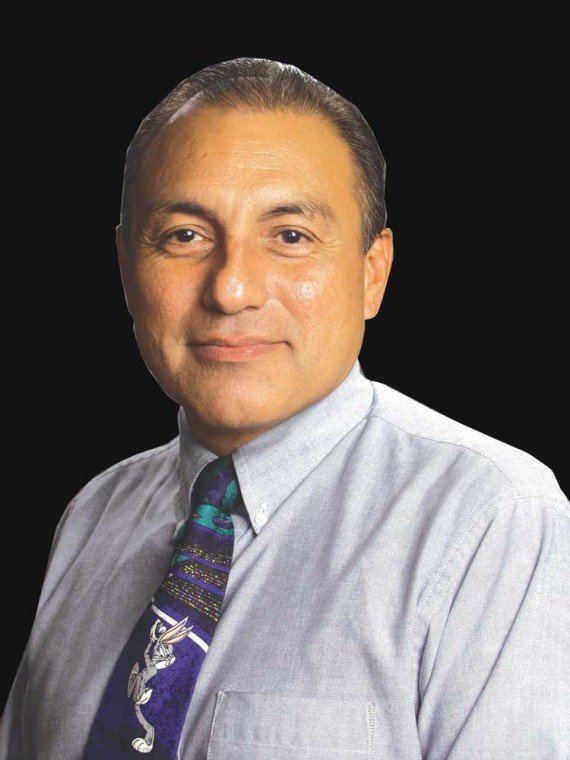GILROY
– Peter Arellano admits it can get a little tiring being on the
losing side of 6-1 and 5-2 votes. Although he sometimes casts his
vote in a vacuum, Arellano believes his voice echoes in the
community.
GILROY – Peter Arellano admits it can get a little tiring being on the losing side of 6-1 and 5-2 votes. Although he sometimes casts his vote in a vacuum, Arellano believes his voice echoes in the community.
“I do present a point of view. It may not be the majority point of view, but it is a point of view and it needs to be put out there,” Arellano said. “If no one says anything, it doesn’t need to be addressed.”
A lifelong Gilroyan and incumbent City Council member, Arellano’s voice represents those who want the city’s focus to be improving what it already has rather than what some interests think it needs.
Arellano is anti-sprawl and believes Gilroy has plenty of retail development. He wants to see housing developments sprout up closer to where residences already exist, and he wants the city to shift its economic incentive program from retail to clean industrial.
“(With) Indian closing there were over 300 jobs lost. The only other (type of job) they can go to (in Gilroy) is minimum wage commercial salesperson. I think we need to find something better for the people who live here,” Arellano said. “We need to look for these companies. They’re not going to come knocking.”
In keeping with his anti-sprawl agenda, Arellano wants companies relocating to Gilroy to be encouraged to place their offices downtown.
“Build an office building downtown. Make a second story. We’ve got some empty lots downtown. Give an incentive to them,” Arellano said.
Arellano isn’t ready to spend city money refurbishing privately owned buildings in downtown, but he does expect the city to keep sidewalks and landscaping in tip-top shape.
Economic incentives to locate businesses here is a useful tax revenue tool in Arellano’s eyes, but he says the city’s policy on incentives has gone astray.
Arellano did not support recent incentive packages given to the developers of the retail centers at Highway 152 and U.S. 101 since developers would not guarantee their sales tax revenue projections.
“Enron had projections, too,” Arellano quipped. “There is nothing that says in (the developers agreements) they have to pay back it back in a certain amount of time. Before (when economic incentives went to individual businesses) it was solid. It was written, it was contracted out … we knew that money was going to come back in three years.”
Arellano also believes that many retailers would come to Gilroy regardless of incentive packages.
“You can’t keep them out,” Arellano said. “We’ve shown that Gilroy is a commercial zone regionally, and it’s a success.”
Arellano has concerns about the Wal-Mart Supercenter proposed for the Pacheco Pass shopping center that range from traffic impacts on Sixth Street to financial impacts on east side businesses.
“I wish we could get a report on (the economic impact). I made the motion, and it lost,” Arellano said.
Arellano doesn’t have a firm trigger for when he would ask a business to do an economic impact report, but in general would expect one from any large-size retail company that is asking for incentives.
On the residential side of things, Arellano says he wants to help Gilroy’s largest housing development, Glen Loma Ranch, go from plan to completed project. Arellano said the nearly 1,400-home development is a well-planned project that sticks to the city’s general plan.
“The whole beauty of the whole thing is different housing, different parks. You have some duplexes, some market-rate homes, some million-dollar homes. It’s not going to be just an enclave of a certain type,” Arellano said.
Arellano’s vision of Gilroy’s future also includes a completed sports park at Monterey Street and Luchessa Avenue. He says since most of the neighborhood parks are designed and ready for construction, the 75-acre park should become a top priority of city business.
On public safety, Arellano is one of many candidates who cringe when they see 80 percent of each tax dollar get spent on police and fire. But he isn’t willing to lower the level of service Gilroy currently gets.
“Do I want to go from five minutes to eight minutes (response time) for a fire call? No. Do I want to lower the number of police officers…? No,” Arellano said.
As for the $26 million design of the police station, Arellano says City Council has done the right thing by making the architect come back with a cheaper version, but says the city never “went luxurious” on it. Most of the extra cost was related to the double-decker underground parking structure, Arellano noted.
What’s most important to Arellano is getting what the police need as soon as possible.
“If we don’t do it now, we’re going to do it in 10 years (when it’s more expensive),” Arellano said. “I’m comfortable with the price that gets us what want. The whole question is what can we afford … so we can complete this project the way we like it, without frills.”
Arellano said he is not against using precinct substations instead of an expensive central headquarters. However, he’s not convinced the precinct model saves the city any money.













